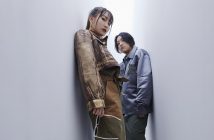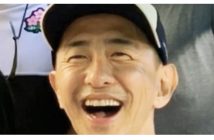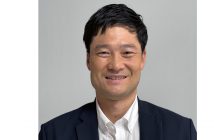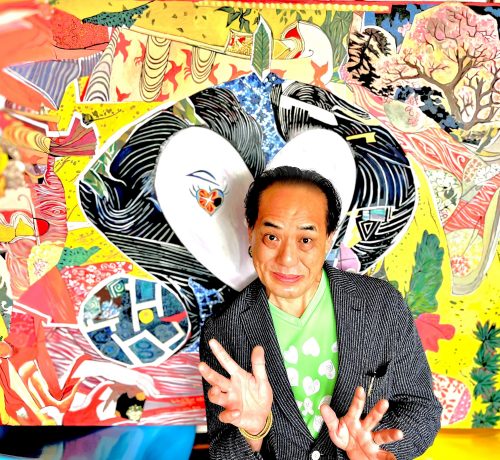
Harako-chan Art and Waku Matsumoto in his atelier (September 22)
Waku Matsumoto, a painter who exhibits at art fairs around the world, has been exhibiting at “Montserrat Contemporary Art,” a gallery in Chelsea, New York, since September (until the end of February next year). We asked him about his thoughts on his works, including “Harako-Chan,” one of his representative works, and the difference in reaction between Japanese and foreign audiences.
I have viewed your video (Note 1). It was overwhelmingly original and unique in its view of the world. And above all, it was “beautiful.
Thank you very much. (Smiling)
When asked for their reactions, most of the fans said they got a gentle and warm impression, while some gave seemingly opposite reactions, saying they were “mysterious and unique.
Artists express what they have created in their own minds, and it is natural that the audience (who receives them) will have a thousand different reactions. I believe that the image that is present in the mind of the viewer is directly reflected in the work. A person who sees it with a happy feeling will perceive something happy, while a person who is troubled may see it as don’t-so-happy. I don’t have anything intrusive to say, “This is how I want this picture to be,” or “This is how I want you to feel. However, I want to express harmony between people, love, peace, nature, and such things by fusing them in a single picture, and this desire has not changed since I was young.
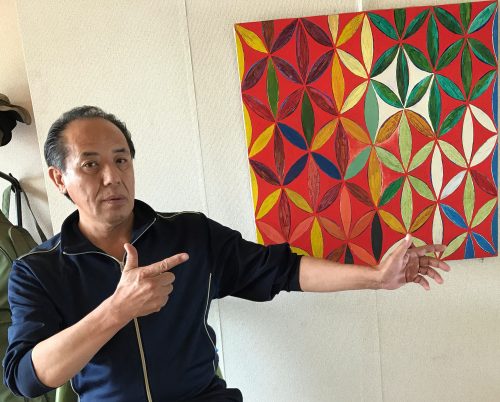
Waku Matsumoto in his studio (2020)
Need a spark of individuality that is obvious at a glance
Despite the avant-garde nature of Mr. WAKU’s worldview, there is also a sense of nostalgia.
I have been exhibiting at art fairs around the world, including North America and Europe, for about 10 years now. When I exhibited in New York in 2010, the president of a gallerist told me, “The world is a big place, Mr. WAKU. When I look around at art fairs around the world, I want to see paintings that everyone can recognize as “Japanese” and “WAKU MATSUMOTO” at a glance. Artists from all over the world have gathered here with such a strong impact and are asserting themselves, so it is necessary to have a sparkle of individuality that makes it obvious that the work is from WAKU MATSUMOTO in Japan. Nowadays, that kind of work is in demand.
From there, I delved deeply into the creative concept and brushed up, and the current “Harako-Chan style,” with its simple and symbolic design, was born.
I was told this by a contract gallerist, and it made me think, “I see.”
It is precisely because you went out into the world that you became aware of my own Japanese identity.
Yes, we are. As a result, nowadays, the only offers I get from the U.S. and Europe are for Harako-Chan works. (Laughter)
Everyone is a model Harako-Chan
Do you have a specific model for Harako-chan, a character that represents WAKU’s work?
The image starts with the wife closest to us… but the concept includes LBGTQ, so it is not limited to women all over the world. Everyone, young and old, male and female, is a model. I am not trying to specify any particular person in this regard, and I am OK with it as long as each viewer thinks, “Yes, this is me,” or “This looks like someone I know. Harako is written “atom” in Chinese characters. Harako is written “atom” and “harako.” Please take a look at our website (Note 2) for the concept.
In short, the atom is the source, the smallest and the greatest source and root of all the material world. From there, I developed an image and named it Harako-Chan.
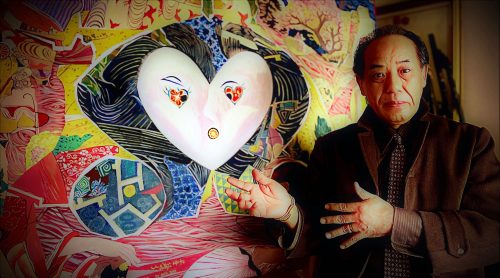
A close view of a winter coat. In my atelier at home (September 22).
Westerners who genuinely feel the work.
Is there any difference in the reaction of audiences coming to your galleries in Japan and around the world?
You know, the interesting thing is that European people, whether French, German, or Spanish, genuinely look at the works with their own eyes first. They feel it with their own hearts. Europe has a traditional foundation of art and culture, so they have a high level of interest in art and are very noble.
In the case of Japan, people first look at a work after hearing about its reputation, or they look at it because they think it is great because it was painted by a famous great master. Because they are not confident in what they feel directly in their hearts or in their own aesthetic sense, many of them start from the fact that the work is already famous or from the academic background or knowledge of the artist.
I think I understand. (Laughs)
Westerners first of all say straight out that what is good is good, that they like it, and that it is wonderful. My works are created using international colors, the three primary colors that are common everywhere in the world, so the first thing that catches the eye is the color. Then, art lovers (a term used by art fans) start asking me about my creative concept. That is the first time I tell them about Harako’s concept. Then, “I see! Their eyes light up and they are very happy.
In contrast to Westerners who look at my work with their own sensibilities, ask me what I am expressing specifically, and then agree with me, Japanese people are somewhat reserved and humble. I would tell them on SNS (Internet social networking site) that I received some award abroad or was recognized somewhere, and they would look at my work for the first time and say, “Wow, that’s great! I feel that people from other countries have the same emotional sensors for art. I think that people overseas may have a greater sensor of emotion toward art. In that sense, “HARACOchan♡ART” is a universal language.
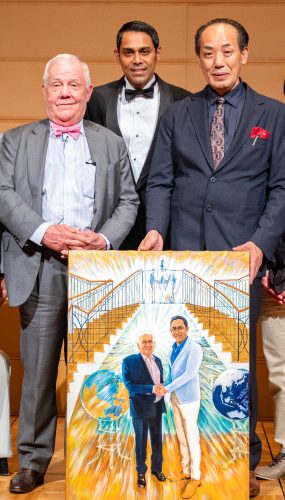
Commemorating the portrait presentation. (From left) Mr. Jim Rogers, one of the world’s three greatest investors, Mr. Sachin Chowdhury, an Indian businessman, and Mr. Waku Matsumoto
Also evaluated in Mongolia and Spain
But still, you are really active in many countries around the world.
In September, my work will be selected for publication in the art textbooks of about 300 Mongolian public schools from elementary to high school as part of the 50th anniversary of diplomatic relations between Japan and Mongolia. Sevilla, Spain / 50 elite artists / representative painters will be selected and invited to exhibit their works. This is a selection of only 50 artists from all genres of Japanese art, and it should be noted that Paul Float, a prominent European art critic, has selected my work. Thanks to him, Harako-Chan’s work in the Modern Art category was selected as an award-winning and invited exhibit.
Do you feel frustrated that your international reputation is not so well received in your home country of Japan?
In Japan, there are inevitably factions within the art world. Artists who have strayed from such organizational frameworks and hierarchical society will probably venture out into the world (laughs). I am always an outcast and unaffiliated (laughs). I don’t like groups, and I am not good at being disciplined by famous Japanese professors. When I was young, I was sometimes told, “Matsumoto-kun, fix this part of this work like this,” but I could not follow their advice, so I did not make it to the top of the art world (laughs). Outlandish, free-spirited creative attitude and still like a young man! As a result, interest in Harako-Chan’s handsome concept art is growing in Europe and the United States.
Western countries are a better fit for the presentation of works.
It is natural for Mr. WAKU to make overseas his main battlefield.
For me, “main battlefield” is not the right word. It is not a battlefield, but rather a sacred place where I can send out messages to people around the world about the art I want to express, and that brings me joy.
In that sense, New York is still the center of the art market in the capitalist economic world.
And Japanese art fans living in New York also say to me, “Oh, there is such a Japanese artist. He is the only artist who has created and presented a portrait of Jim Rogers, one of the world’s three most famous investors. And his original design of Harako-Chan art is super cute! I love it! (Laughs)
As a side note, “Harako-Chan T-shirts” are a popular fashion item among ladies in Japan.
(Click here to watch a movie introducing Harako-Chan T-shirts)
The joy of creating and presenting artwork that meets the eye of art collectors in New York, a mature art market, and gaining recognition. I feel that the West is a much better place for me to present my work than Japan, as I can feel the “sharpness of artistic sensibility” firsthand and convert it into encouragement and energy for my own creation.
What is going through your mind when you are creating?
I am conscious of the harmony of the screen. Once I begin to paint, I get into the work and become completely absorbed in it. I decide on a theme for each piece beforehand. Once I cross a certain line while focusing on the brushstrokes, I become more and more focused, and my hand moves automatically to the next line, color, shape, and flow. If I think about it too much, I stop and can’t paint. This feeling is a bit like life, isn’t it?
Finally, a message to our readers.
I am very proud to have my work exhibited in New York, the art capital of the world. This is not a solo exhibition, but a permanent exhibit for six months. I hope it will be an opportunity for my Harako-Chan works to be recognized by top art collectors and visitors.
I would like people to know that there is an artist in Japan, Mr. WAKU, who “draws kawaii handsome Harako-Chan with exciting hearts and presents them all over the world. I would also like to invite you to watch the music video (Note 3) that I produced of the many Harako-Chan works that I was unable to bring to New York this time.
Gallery Information
[Gallery] Montserrat Contemporary Art
[Address] 547 West 27 St New York NY
[Open] Wednesday-Saturday noon to 6:00 p.m.
[Web] www.montserrat.us/waku-matsumoto
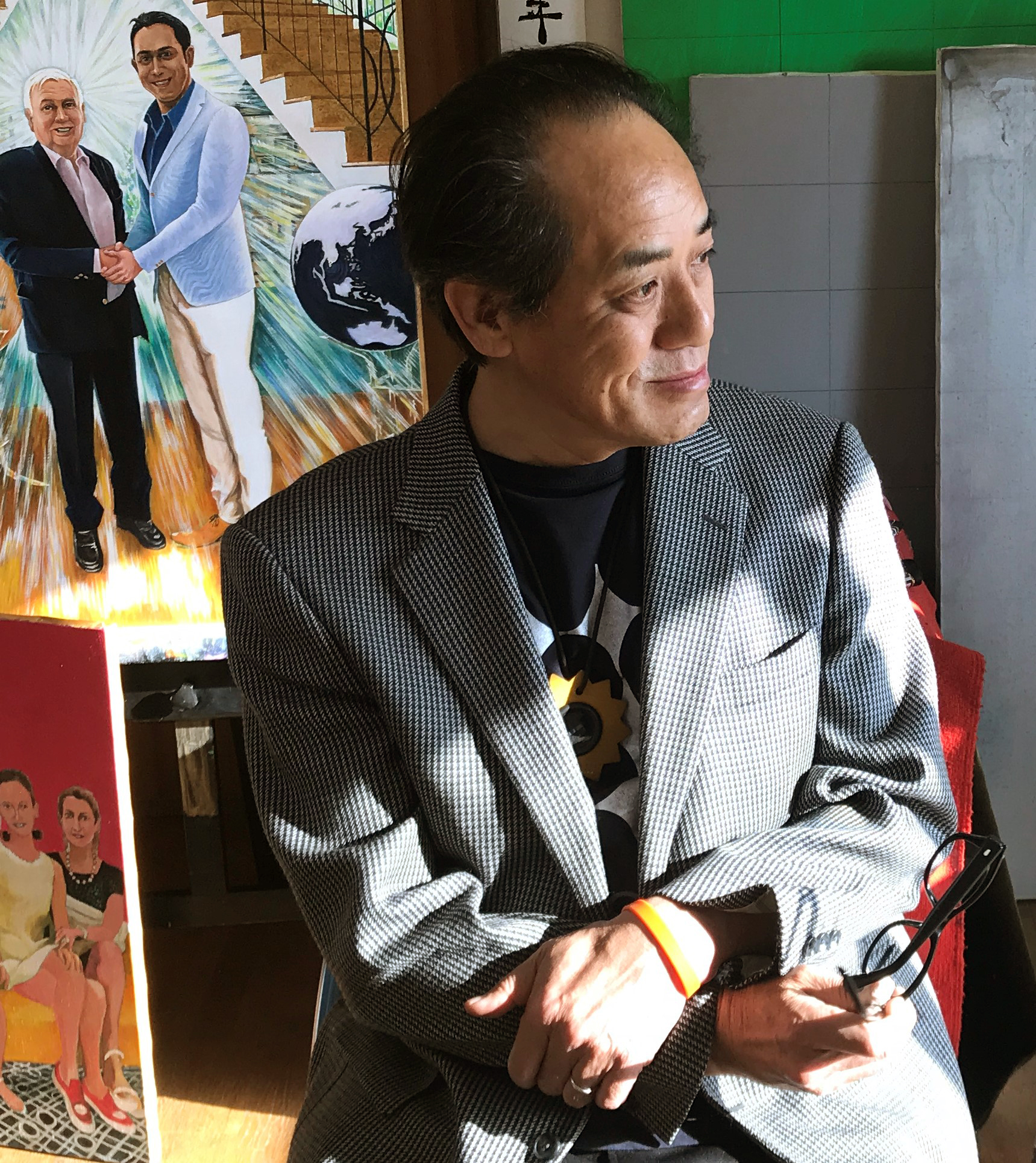
Waku Matsumoto in his studio (2018)
(profile)
Waku Matsumoto
1982 Gunma Youth Art Exhibition (now Gunma Youth Biennial)/Excellence Prize, Gunma Prefectural Museum of Modern Art
1986 Studied in Madrid, Spain at his own expense
2008-2010 WAKU-ART / Aoyama PROMO ARTE
REDDOT ART FAIR in New York, ART SANTA FE,
ART FAIR MIAMI, S.O.A.F.Soul Open Art Fair,
Art Monaco 2013,
Japan Artist Festival / Malta
Valletta Mediterranean Conference Center, Valletta, Malta (invited artist)
Japan-Europe Palace Art Festival 2021 in Berlin / Charlottenburg Palace
Germany-Japan Tangermünde Friendship Exhibition / Elbe Art Ties
Artexpo New York 2021
50th Anniversary of the Establishment of Diplomatic Relations between Japan and Mongolia 2022
New Bigen: A Comprehensive Collection of Japanese and Mongolian Art to Pass Down to Future Generations
(Harako-Chan’s works are included in the art textbooks of 300 Mongolian public schools)
Muechen, Germany Japan-Germany Contemporary Art and Culture Exchange Exhibition 2022 (Invited artist)
The Orangery Schoenbrunn, Nymphenburg Palace, Muenchen, Germany
Seville, Spain 47th Japan Week 2022 (Invited artist)
March – May 2023 Art Festival for Peace – Convergence of Beauty
Peace tu the World in Tokyo 2023 (Selected Painter)
〈web〉WAKU MATSUMOTO
〈Facebook〉WAKU MATSUMOTO
〈YouTube〉HARACOchan’s ♡ concept Art 2019
〈YouTube〉wakuart WM – YouTube
〈YouTube〉48yohane – YouTube

